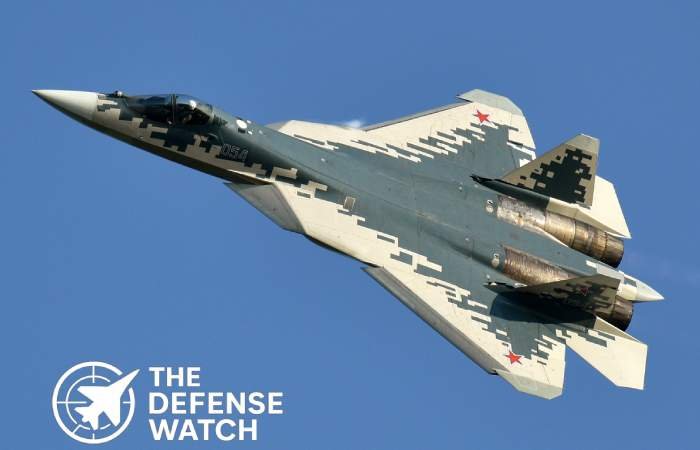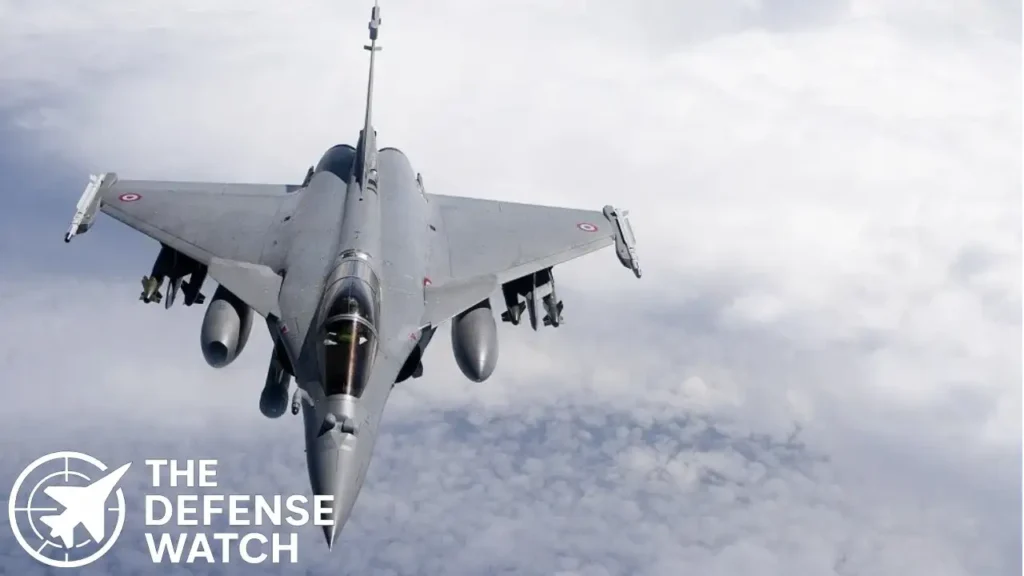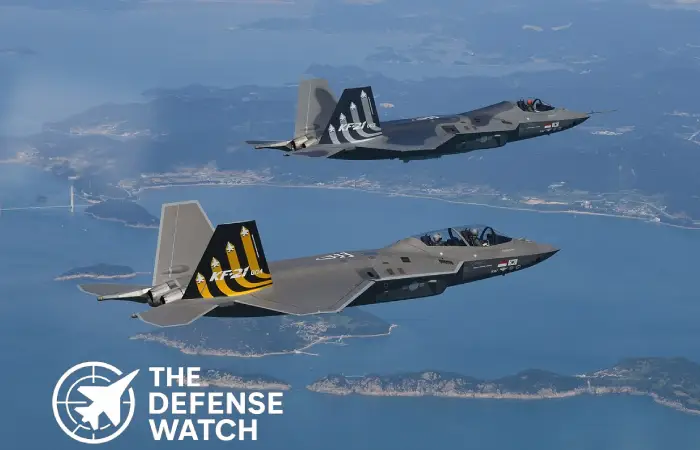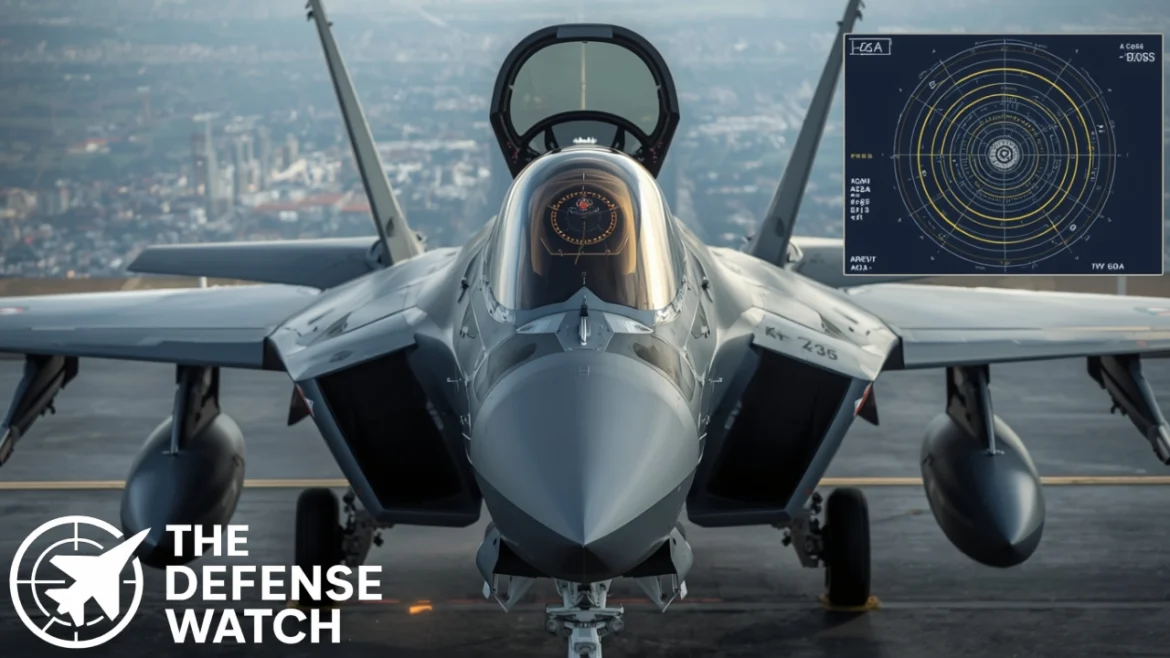In the rapidly evolving landscape of military aviation, fighter jets with advanced radar systems represent the cutting edge of aerial superiority. These sophisticated sensors not only detect and track threats at unprecedented ranges but also integrate electronic warfare capabilities, enabling pilots to dominate contested airspace. As of October 2025, advancements in active electronically scanned array (AESA) technology have elevated radar performance, allowing for simultaneous multi-target engagement and resistance to jamming. This article compares six standout fighter jets equipped with the most advanced radar systems, drawing on recent developments to highlight their unique strengths.
The Evolution of Fighter Jet Radar Systems
Radar technology in fighter jets has come a long way since the mechanically scanned arrays of the 20th century. Today’s AESA radars use thousands of transmit/receive modules to electronically steer beams without physical movement, offering faster scanning, greater reliability, and enhanced stealth features. By 2025, gallium nitride (GaN) components have become standard in many systems, boosting power efficiency and range. These innovations are crucial in an era of hypersonic threats and drone swarms, where early detection can decide the outcome of engagements.
F-35 Lightning II: AN/APG-81 AESA Radar
The Lockheed Martin F-35 Lightning II stands out among fighter jets with advanced radar systems due to its AN/APG-81 AESA radar, developed by Northrop Grumman. This system excels in sensor fusion, seamlessly integrating data from radar, infrared sensors, and electronic warfare suites to provide a 360-degree situational awareness bubble.

Capable of tracking up to 23 targets simultaneously while engaging multiple threats, the AN/APG-81 offers detection ranges exceeding 150 kilometers for air-to-air targets. Its low-probability-of-intercept mode makes it hard for adversaries to detect, enhancing the jet’s stealth profile. As of 2025, over 1,000 F-35s have been delivered globally, with ongoing upgrades incorporating AI-driven threat analysis (Source: Northrop Grumman AN/APG-81).
F-15EX Eagle II: AN/APG-82(V)1 AESA Radar
Boeing’s F-15EX Eagle II features the Raytheon AN/APG-82(V)1 AESA radar, a powerhouse among fighter jets with advanced radar systems. Utilizing GaN technology, this radar delivers superior performance over legacy systems, with faster target acquisition and improved resistance to electronic countermeasures.

It can track more than 30 targets at once and engage up to eight simultaneously, with ranges extending beyond 200 kilometers in optimal conditions. The F-15EX, entering service with the U.S. Air Force in recent years, benefits from this radar’s ability to handle high-threat environments, making it ideal for air superiority and strike missions. Recent tests in 2025 have demonstrated its integration with hypersonic missile detection (Source: Boeing F-15EX).
Su-57 Felon: N036 Byelka Radar Complex
Russia’s Sukhoi Su-57 Felon incorporates the N036 Byelka AESA radar complex, a multi-array system that sets it apart in the realm of fighter jets with advanced radar systems. Developed by the Phazotron-NIIR institute, it includes forward-facing, side-looking, and rear arrays for full spherical coverage.

Claimed detection ranges reach up to 400 kilometers for large targets, with the ability to track 60 threats and engage 16 at once. The Su-57’s radar also supports passive detection modes, reducing its electromagnetic signature. By mid-2025, Russia has ramped up production amid geopolitical tensions, positioning the jet as a counter to Western stealth fighters.
Rafale: RBE2 AESA Radar
The Dassault Rafale employs the Thales RBE2 AESA radar, a versatile system that enhances its status among fighter jets with advanced radar systems. This radar tracks 40 targets concurrently and engages eight, with detection ranges over 200 kilometers for fighter-sized objects.

Integrated electronic warfare functions allow it to jam enemy radars and communications, providing a dual offensive-defensive role. France’s Rafale fleet, updated in 2025 with software enhancements, has seen exports to nations like India and Greece, underscoring its reliability in multi-role operations
KF-21 Boramae: Indigenous AESA Radar
South Korea’s KF-21 Boramae features a homegrown AESA radar from Hanwha Systems, marking a significant leap for fighter jets with advanced radar systems in Asia. This radar offers rapid beam steering for quicker target locks and extended detection ranges compared to older mechanical systems.

It supports multi-mode operations, including synthetic aperture mapping for ground strikes. As of August 2025, the first batch of 40 radars was delivered, with full production slated through 2028. The KF-21’s development reflects South Korea’s push for indigenous defense tech amid regional threats.
J-20 Mighty Dragon: Type 1475 AESA Radar
China’s Chengdu J-20 Mighty Dragon is equipped with the Type 1475 AESA radar, an advanced system shrouded in some secrecy but recognized for its prowess among fighter jets with advanced radar systems. Analysts estimate detection ranges comparable to peers, around 250-300 kilometers, with strong electronic warfare integration.

It enables simultaneous air-to-air and air-to-ground modes, bolstering the jet’s stealth and supercruise capabilities. By 2025, China has expanded its J-20 fleet to over 200 units, enhancing its air force’s projection in the Indo-Pacific.
Comparative Analysis of Advanced Radar Systems
When comparing these fighter jets with advanced radar systems, key metrics include detection range, target tracking capacity, and integration features. The Su-57’s Byelka leads in claimed range (400 km) and 360-degree coverage, ideal for defensive scenarios, while the F-35’s AN/APG-81 excels in sensor fusion for networked warfare. The F-15EX and Rafale offer robust multi-target engagement (30+ and 40 tracks), making them suited for high-intensity conflicts.
In terms of technology, GaN adoption in the AN/APG-82 and RBE2 provides efficiency gains over earlier designs. The KF-21 and J-20 represent emerging powers’ advancements, with the former emphasizing rapid acquisition and the latter focusing on stealth synergy. Overall, Western systems like the AN/APG-81 prioritize interoperability, while Russian and Chinese radars emphasize raw power and electronic countermeasures.
Strategic Implications and Future Trends
The proliferation of fighter jets with advanced radar systems underscores a shift toward information-centric warfare, where superior sensing translates to battlefield dominance. In contested environments like the South China Sea or Eastern Europe, these radars enable early warning against stealth threats, potentially deterring aggression through enhanced deterrence postures.
Looking ahead, trends point to AI integration for automated threat prioritization and quantum-resistant encryption to counter jamming. As nations like the U.S. advance Next Generation Air Dominance (NGAD) programs by 2025, expect even more hybrid sensor suites that blend radar with directed energy weapons, reshaping global airpower balances.
In summary, these six fighter jets with the most advanced radar systems highlight the technological arms race in aerospace, each contributing uniquely to modern defense strategies.
FAQs
An Active Electronically Scanned Array (AESA) radar uses many small transmit/receive modules to steer beams electronically rather than mechanically. This enables faster scan rates, better multibeam/multimode operation, improved reliability, lower probability of intercept and greater resistance to jamming.
Yes — while AESA offers significant advantages, older PESA or mechanically-scanned radars (such as in Su-30MKI or early Typhoon models) remain effective, particularly when upgraded, and when integrated into a strong sensor/weapon network.
Radar detection of stealth aircraft depends on many factors (RCS, frequency band, geometry, environment). Advanced radars with wide coverage, EW integration and novel sensor modes improve detection, but stealth remains a relevant challenge. Moreover, emerging technologies such as quantum radars promise new detection vectors.
Very important — modern radars often include synthetic aperture radar (SAR) mapping, ground-moving target indication (GMTI), and full multimode air/ground capability. Platforms such as the F-35, Typhoon and Gripen E are designed with this in mind.


35 comments
[…] in that era, especially during Gulf War. However, by the 2000s adversaries had deployed more advanced radars, integrated SAM networks, passive sensors and infrared search-and-track (IRST) systems. Stealth […]
[…] WDMMA data underpinning the claim highlights that although China possesses a larger total number of military aircraft (5,357) compared with India’s 2,488 across services, the IAF’s strength in component balance […]
[…] The procurement also reflects how non-U.S. suppliers continue to capture market share for advanced combat aircraft — a trend Washington monitors in its competitive and allied […]
[…] The X-BAT unveiled by Shield AI represents a bold step toward autonomous, distributed airpower—one that could reshape how the U.S. and its allies project dominance in future contested environments. Over the next few years, the critical tests will be transition from concept to contract, demonstration of autonomy under mission-realistic conditions, and integration into existing force structure and doctrine. If successful, X-BAT could become a cornerstone of 21st-century air warfare—setting new performance, cost and deployment paradigms for combat aviation. […]
[…] the Navy had gone with a single-engine design, projects such as the F/A-18E/F Super Hornet or joint service fighters might have followed a different […]
[…] The strike group will include the carrier itself, associated warships, and potentially advanced air assets. This move comes amid intensifying U.S. counter-narcotics and “narcoterrorism” […]
[…] into a new era of capability. It includes the GE F414G engine, offering 20% more thrust, an AESA radar, an electronic warfare (EW) suite, and a new wide-area cockpit […]
[…] the island’s largest fighter acquisition in three decades. The new variant features the APG-83 AESA radar, advanced mission computers, improved electronic warfare suites, and compatibility with U.S. […]
[…] note that swarm coordination could be critical in penetrating modern ship defenses, such as layered radar systems and anti-missile […]
[…] Advanced sensors and network: Emphasis on a “family of systems” approach, with the fighter functioning as a node in a larger sensor-shooter architecture (including unmanned wingmen, satellites and airborne sensors). The article references earlier studies of this trend. […]
[…] to beyond 1 700 km with drop tanks, powered by a Klimov RD-93MA engine and equipped with the KLJ-7A AESA radar among other enhancements. According to one defense-industry commentary, the unit cost is estimated […]
[…] The F-22 airframe is not static: over the years it has undergone software, sensors, coatings and weapons updates—so much so that it is arguably a very different aircraft today than the one that first entered service. […]
[…] examined the aircraft’s radar cross-section, avionics architecture, radar performance parameters, and aerodynamic handling. […]
[…] U.S. Air Force and global export market. The modern Block 70/72 variants offer upgraded avionics, AESA radar, and expanded weapons […]
[…] Typhoon benefits from continuous upgrades—particularly the Captor-E AESA radar, updated mission systems, and next-generation air-to-air missile integrations. While not a stealth […]
[…] AESA radars […]
[…] export customers’ aircraft, limitations can arise. For instance, the JF-17 Block III in Pakistani service may have radar and aerodynamic limits that reduce the PL-15E’s effective engagement […]
[…] Full transfer of source code, enabling integration of Indian weapons such as the Astra air-to-air missile, Rudram anti-radiation missile, and Virupaksha AESA radar. […]
[…] Next-Gen… Global Hypersonic Arms Race Intensifies: China, India, Japan, Russia & U.S…. 6 Fighter Jets With the Most Advanced Radar Systems in Service… China vs. U.S. Naval Expansion: Who Holds the Edge in the… USCYBERCOM FY 2025 Priorities: […]
[…] Next-Gen… Global Hypersonic Arms Race Intensifies: China, India, Japan, Russia & U.S…. 6 Fighter Jets With the Most Advanced Radar Systems in Service… China vs. U.S. Naval Expansion: Who Holds the Edge in the… USCYBERCOM FY 2025 Priorities: […]
[…] Debate Amid Rapid Military AI… Why the U.S. Air Force Still Uses the A-10 Warthog in… 6 Fighter Jets With the Most Advanced Radar Systems in Service… Key Features of Boeing’s Sixth-Gen F-47 Fighter Jet That Define Next-Gen… Global Hypersonic […]
[…] Warfare in 2025 Autonomous Weapon Systems Spark U.S. Ethics Debate Amid Rapid Military AI… 6 Fighter Jets With the Most Advanced Radar Systems in Service… Why the U.S. Air Force Still Uses the A-10 Warthog in… Key Features of Boeing’s Sixth-Gen […]
[…] Warfare in 2025 Autonomous Weapon Systems Spark U.S. Ethics Debate Amid Rapid Military AI… 6 Fighter Jets With the Most Advanced Radar Systems in Service… Why the U.S. Air Force Still Uses the A-10 Warthog in… Key Features of Boeing’s Sixth-Gen […]
[…] Costliest Fighter Jet Fleets in… Top 5 U.S. Army Weapons That Define Modern Warfare in 2025 6 Fighter Jets With the Most Advanced Radar Systems in Service… Autonomous Weapon Systems Spark U.S. Ethics Debate Amid Rapid Military AI… Why the U.S. Air […]
[…] Costliest Fighter Jet Fleets in… Top 5 U.S. Army Weapons That Define Modern Warfare in 2025 6 Fighter Jets With the Most Advanced Radar Systems in Service… Autonomous Weapon Systems Spark U.S. Ethics Debate Amid Rapid Military AI… Why the U.S. Air […]
[…] Costliest Fighter Jet Fleets in… Top 5 U.S. Army Weapons That Define Modern Warfare in 2025 6 Fighter Jets With the Most Advanced Radar Systems in Service… Autonomous Weapon Systems Spark U.S. Ethics Debate Amid Rapid Military AI… Key Features of […]
[…] Future Security… Which 5 Air Forces Possess the Costliest Fighter Jet Fleets in… 6 Fighter Jets With the Most Advanced Radar Systems in Service… Top 5 U.S. Army Weapons That Define Modern Warfare in 2025 Autonomous Weapon Systems Spark U.S. […]
[…] Future Security… Which 5 Air Forces Possess the Costliest Fighter Jet Fleets in… 6 Fighter Jets With the Most Advanced Radar Systems in Service… Top 5 U.S. Army Weapons That Define Modern Warfare in 2025 Autonomous Weapon Systems Spark U.S. […]
[…] Future Security… Top 5 U.S. Army Weapons That Define Modern Warfare in 2025 6 Fighter Jets With the Most Advanced Radar Systems in Service… Hypersonic Weapons Race 2025: U.S., Russia, China Vie for Supremacy in… Autonomous Weapon […]
[…] December 11, 2025 Top Posts 6 Fighter Jets With the Most Advanced Radar Systems in Service… Which 5 Air Forces Possess the Costliest Fighter Jet Fleets in… Top 5 U.S. Army Weapons That […]
[…] 12, 2025 Top Posts Which 5 Air Forces Possess the Costliest Fighter Jet Fleets in… 6 Fighter Jets With the Most Advanced Radar Systems in Service… Top 5 U.S. Army Weapons That Define Modern Warfare in 2025 Evolving Strategic Value: Carrier […]
[…] December 18, 2025 Top Posts 6 Fighter Jets With the Most Advanced Radar Systems in Service… Which 5 Air Forces Possess the Costliest Fighter Jet Fleets in… Top 5 U.S. Army Weapons That […]
[…] December 20, 2025 Top Posts 6 Fighter Jets With the Most Advanced Radar Systems in Service… Which 5 Air Forces Possess the Costliest Fighter Jet Fleets in… Top 5 U.S. Army Weapons That […]
[…] December 21, 2025 Top Posts 6 Fighter Jets With the Most Advanced Radar Systems in Service… Which 5 Air Forces Possess the Costliest Fighter Jet Fleets in… Top 5 U.S. Army Weapons That […]
[…] December 21, 2025 Top Posts 6 Fighter Jets With the Most Advanced Radar Systems in Service… Which 5 Air Forces Possess the Costliest Fighter Jet Fleets in… Top 5 U.S. Army Weapons That […]